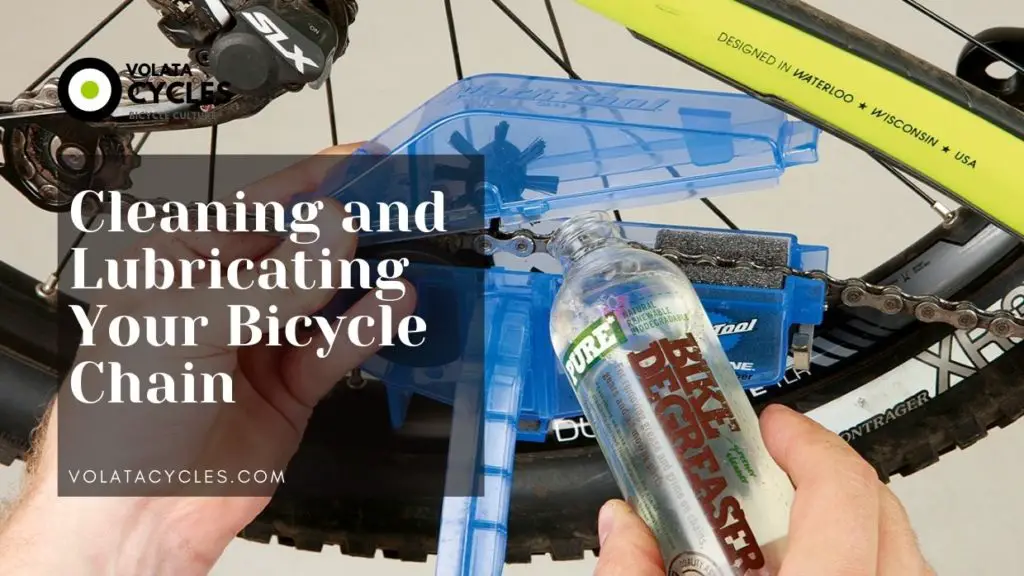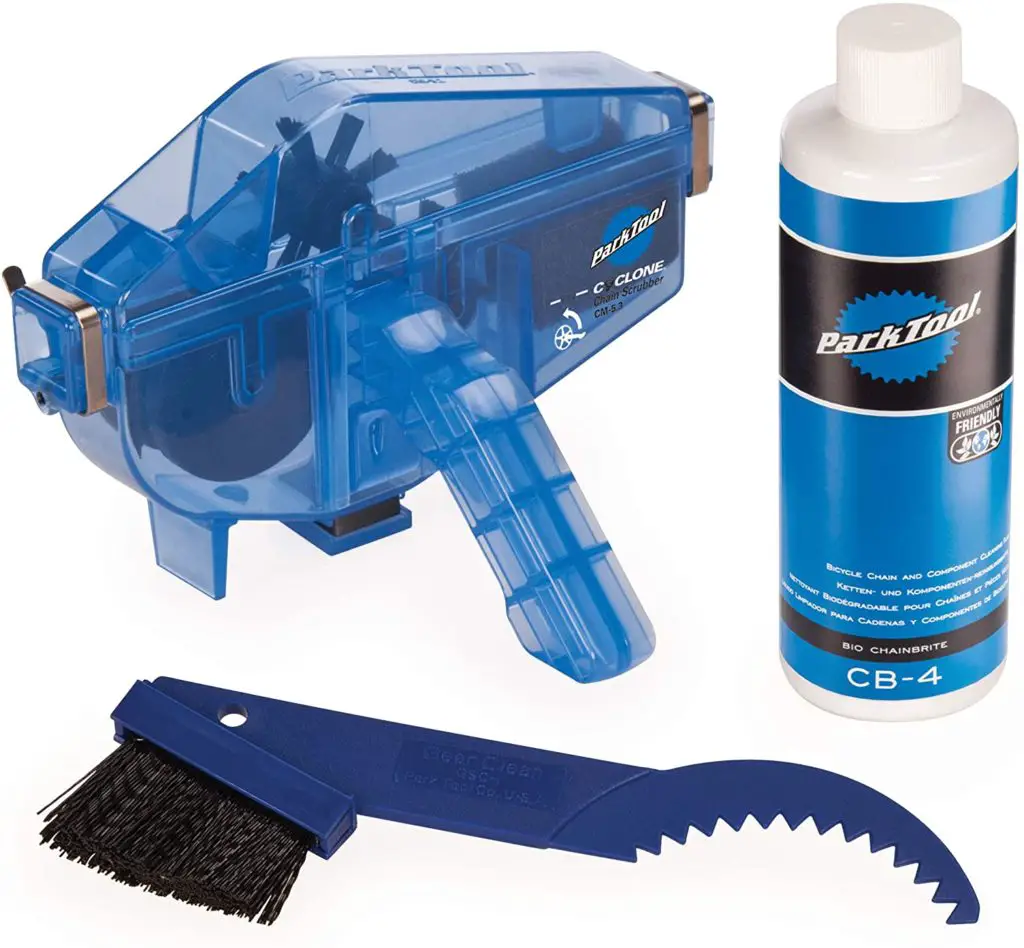Bicycle chains are one of the most important parts of a bicycle. They provide an essential function for your bicycle, and they need to be kept clean and lubricated to avoid unnecessary wear. This blog post will guide you through everything that you need to know about bicycle chain maintenance so that you can keep your bicycle running smoothly!

It’s easy to get confused when it comes to chain cleaning and lubrication. However, all of them would probably agree on the importance of the words “lightly” and “often.” This simply implies that wiping your chain down lightly every few rides is better than dousing it in oil every few years or so.
First, consider how old the chain is. It’s always preferable to measure a chain before cleaning it since there’s no sense in cleaning a worn-out chain. Replace it instead.
If you don’t have a quick connector on your chain, think carefully before removing it to clean it. It’s simple to clean the chain off the bike while it’s still attached by wiping it with a towel moistened with solvent. To clean the links, spray them with solvent one at a time to loosen the gunk. To protect your hands, put on gloves and wipe off the muck from the side plates and rollers until all of the links are clean.
Park Tool’s Chain Machine kit, which has a solvent reservoir and scrubbing brushes to clean your chain on the bike thoroughly, is also an excellent tool for cleaning your chain on the bike.

According to the manufacturer’s recommendations, fill the reservoir with clean water and a mild solvent. There are aggressive solvents designed for use on bicycles that can break down old, dirty lubricants, but they won’t damage rubber or plastic parts like seals and derailleur pulleys.
Turn the chain crank backward very slowly in a circular motion with your right hand as you close the chain scrubber around the bottom section of the chain and hold it firmly in your left. Allow for many cycles of passing through – removing and replacing the solvent, if required – until the chain is clean.
Wipe the chain dry after removing the scrubber. There will still be some solvent trapped beneath the chain’s roller, so let it sit until all of the solvents have evaporated before reapplying lubricant.
Chains with quick reusable connections can be removed and replaced many times. Still, all chain makers concur that any chain with a fixed connector (Campagnolo or Shimano connection pins or SRAM PowerLock) should not be disassembled and reinstalled more than once after installation.
Removing and reinstalling them might cause the links to weaken, which can result in chain breakage when riding. Wiping the chain regularly will also help protect your cassette and chainrings from a build-up of dirt.
If it is very dirty, you can take the chain off. But be careful. If you use a lot of solvents, the chain will not look clean. Instead, please put it in a large pan with water or air bubbles to clean it better.
Pour some solvents into the pan with the chain and put on rubber gloves so the chemicals won’t attack.
To remove the heavy dirt that has caked onto your chain, start with a firm brush and work your way up to a softer one – I like using a paintbrush made from natural bristles.
Take the chain from the pan, then wash it in clean water. Allow the mixture to sit for a few minutes so any remaining solvent can evaporate. Pour the filthy solvent into a sealed container for recycling while you wait. Reattach your chain to your bike and apply some of your favorite chain lubricants.
Solvents
Liquid cleaners (such as Simple Green, among others) might include surfactants, harming the chain’s surface if left on for too long. It’s also a good idea to always end with solvents by rinsing the chain with clean water before drying it. This little amount of water will not be enough to cause corrosion as long as you don’t let the chain hang dry for too long.
It’s not always that simple to figure out whether a solvent is biodegradable or not. It’s also important to note that simply because a solvent is green, it does not automatically imply biodegradable. Don’t just assume you can pour it down the drain using a biodegradable solvent.
Lubricant is not biodegradable and should be disposed of carefully. Before deciding on a disposal method, make sure that the lubricant has been broken down and not mixed with anything else that is not biodegradable. You can also think about skimming off the mostly clean solvent and reusing it.
Lubricants
Different people have different opinions on what is the best lubricant. Some people prefer dry lubes that consist of a light lubricant in a volatile carrier. They end up dry to the touch and attract less dust and dirt than oils that remain moist.
When it comes to chain maintenance, lubricants are important. Apply one of these particular lubricants to reduce dirt pick up on the chain while maintaining excellent lubricating qualities after cleaning the chain and allowing it to dry.
When you ride your bike, sometimes the chain will get dirty. It can be hard to clean the chain if it is very dirty. Sometimes it’s good to clean your chain by using lubricant. You can use a wet coat of lubricant and wipe away the excess with dirt to make it easier to clean the chain.
While this method does require some maintenance, it can help you stretch out the time between major cleanings.
More recently, specialized lubes that are applied and left to dry have become popular. These require more frequent application than some of the other types of lubes, but they’re among the cleanest. They aren’t ideal for riding in the rain, but they’re adequate in dry conditions.
On the other hand, many riders choose to clean their chains with only natural oil. Because oils resist corrosion and don’t wash away when wet, they’re an excellent choice for early spring or rainy regions.
Because there are so many different types of lubricants available (new ones arrive almost every month), you may wish to test them all to see which one works best for the riding you do and the climate where you ride. Contact local bike shop technicians or friends who ride with you for suggestions.
Even after a light lube has been applied, a chain may squeak after being cleaned with a strong solvent. To silence the squeak, apply a light coat of bicycle oil or an oil-based chain lubricant to the chain. Wipe it clean and keep it fresh with your spray, drip, or wax lubricant.
Use a lubricant formulated for bicycle chains rather than three-in-one oil: It’s an unsophisticated, vegetable-based oil that will clog up your chain—and it doesn’t protect against wear as well as a lubricant that is made specifically for bicycle chains.
Avoid lubricating your chain with used motor oil, which contains fine particles of metal and acids produced by the heat of combustion that can harm the chain over time.
Final words
It is important to clean bicycle chains periodically. It’s not always that simple to figure out whether a solvent is biodegradable or not. The lubricant also needs to be disposed of carefully before use. This blog post has provided you with all the information you need about bicycle chain maintenance, including how lubricants are used on your bicycle chain after it has been cleaned. We hope this article will help make bicycle cleaning easier for everyone!
